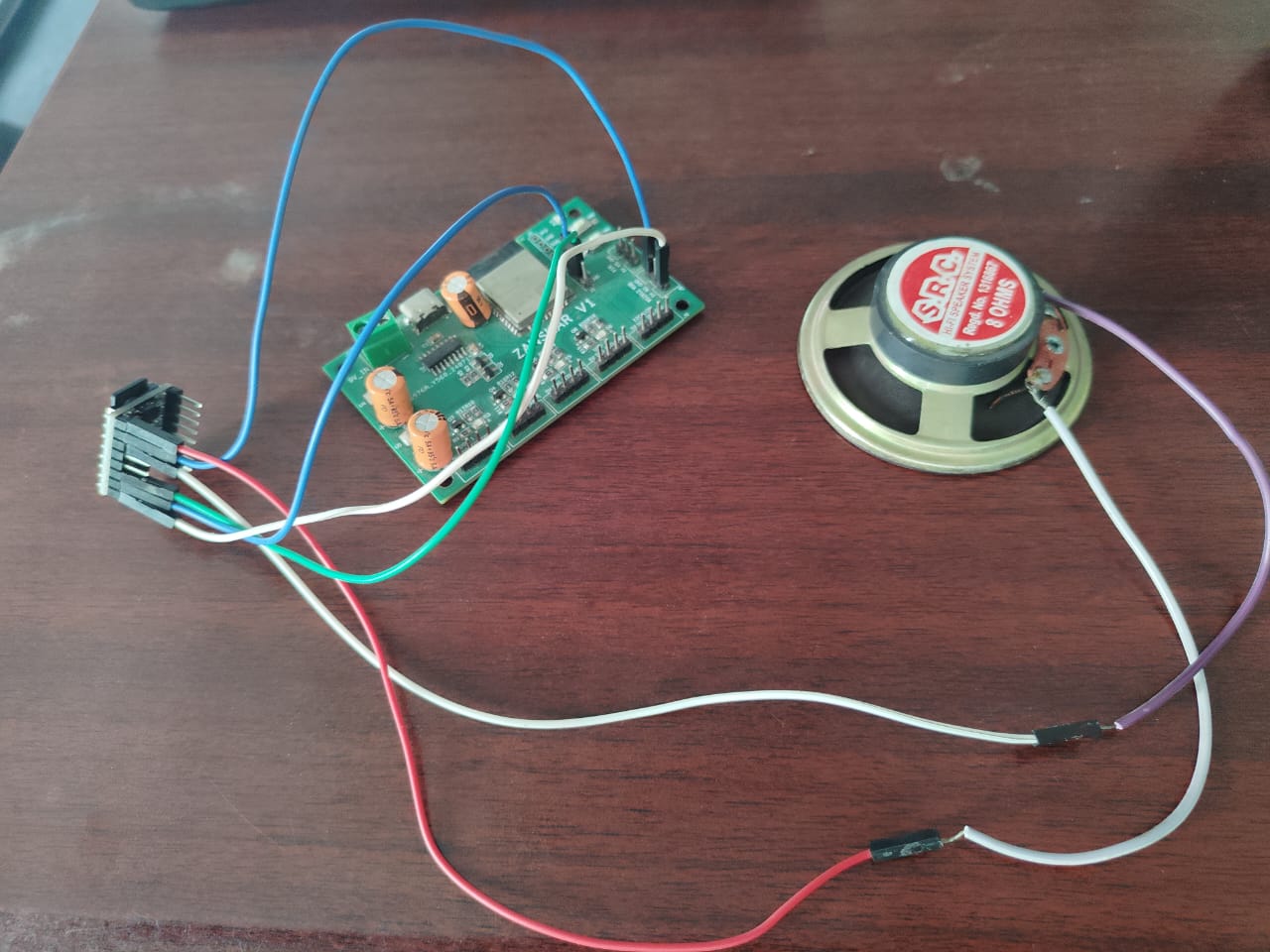WEEK 10: Output Devices
Assignment - Add an output device to a microcontroller board you've designed, and program it to do something
1. PCB Board - ESP32 MPC
2. Sensors - DFPlayer Mini MP3 - player Module
Output Devices
Output devices are essential components in digital fabrication, enabling systems to interact with the physical world by converting electronic signals into meaningful actions. These devices range from visual indicators like LEDs and displays to actuators such as motors and speakers, which provide motion and sound output. In this assignment, I explored different output devices, their working principles, and their integration with microcontrollers to create interactive systems. By programming and testing these devices, I gained a deeper understanding of how to control them efficiently for various applications.
DFPlayer Mini MP3
DFPLayer Mini module is a serial MP3 module provides the perfect integrated MP3, WMV hardware decoding. While the software supports TF card driver, supports FAT16, FAT32 file system. Through simple serial commands to specify music playing, as well as how to play music and other functions, without the cumbersome underlying operating, easy to use, stable and reliable are the most important features of this module.

Features
-> Support Mp3 and WMV decoding
-> Support sampling rate of 8KHz,11.025KHz,12KHz,16KHz,22.05KHz,24KHz,32KHz,44.1KHz,48KHz
-> 24-bit DAC output, dynamic range support 90dB, SNR supports 85dB
-> Supports FAT16, FAT32 file system, maximum support 32GB TF card
-> A variety of control modes, serial mode, AD key control mode
-> The broadcast language spots feature, you can pause the background music being played
-> Built-in 3W amplifier
-> The audio data is sorted by folder; supports up to 100 folders, each folder can be assigned to 1000 songs
-> 30 levels volume adjustable, 10 levels EQ adjustable.
Applcations
-> Car navigation voice broadcast
-> Road transport inspectors, toll stations voice prompts
-> Railway station, bus safety inspection voice prompts
-> Electricity, communications, financial business hall voice prompts
-> Vehicle into and out of the channel verify that the voice prompts
Pin Out

Reference Link
Mini PlayerXIAO ESP32C3 Module
The XIAO ESP32-C3 is a compact, low-power microcontroller module based on the ESP32-C3 chip, which features a RISC-V single-core processor, built-in Wi-Fi and Bluetooth 5 (LE) connectivity. It is part of Seeed Studio’s XIAO series, designed for IoT and embedded applications.

Features
-> Powerful CPU: ESP32-C3, 32bit RISC-V singlecore processor that operates at up to 160 MHz
-> Complete WiFi subsystem
-> Bluetooth LE subsystem
-> Ultra-Low Power
-> Better RF performance
-> Battery charging chip
-> Rich on-chip resources
-> Ultra small size
-> Reliable security features
-> Rich interfaces: 1xI2C, 1xSP
Pin Out

Reference Link
XIAO ESP32C3Assignemnt Work
For these output devices assignment, I have used the ESP32-C3 module, DF Mini Player, and a speaker. I wrote the code in Arduino IDE to play different audio files stored on the SD card inside the Mini Player.
PCB Board Design
I have designed the PCB board with the ESP32-C3 module in KiCad. The PCB has 2 general purpose I/O pins, one I2C connection pin, and one power control push button.
Screen shots
Schematic DiagramPCB Board Design
Routing
PCB Board 3D view
Functional Output Files Click Here - Schematic Diagram
Click Here - Gerber File
Practical Work
The PCB design process is completed, but due to some reasons, I am unable to print the PCB board. Previously, I had designed a board using the ESP32 with some GPIO pins and support for a 24V power supply. For this assignment, I have used that board along with the Mini MP3 player and an 8-ohm speaker. I wrote the code in Arduino IDE to test the MP3 player.
Hero Shots
Hardware Connection

Program
This ESP32 sketch demonstrates how the DFPlayer Mini module is used to play audio files from an SD card by sending commands through the serial connection. The myDFPlayer.play(1) command starts playing the first audio file, and myDFPlayer.next() skips to the next audio file every 4 seconds. If the SD card contains 4 audio files, the code will play each file for 4 seconds before moving to the next one, cycling through all the files. It also prints debug information to the Serial Monitor.
Click Here - Code